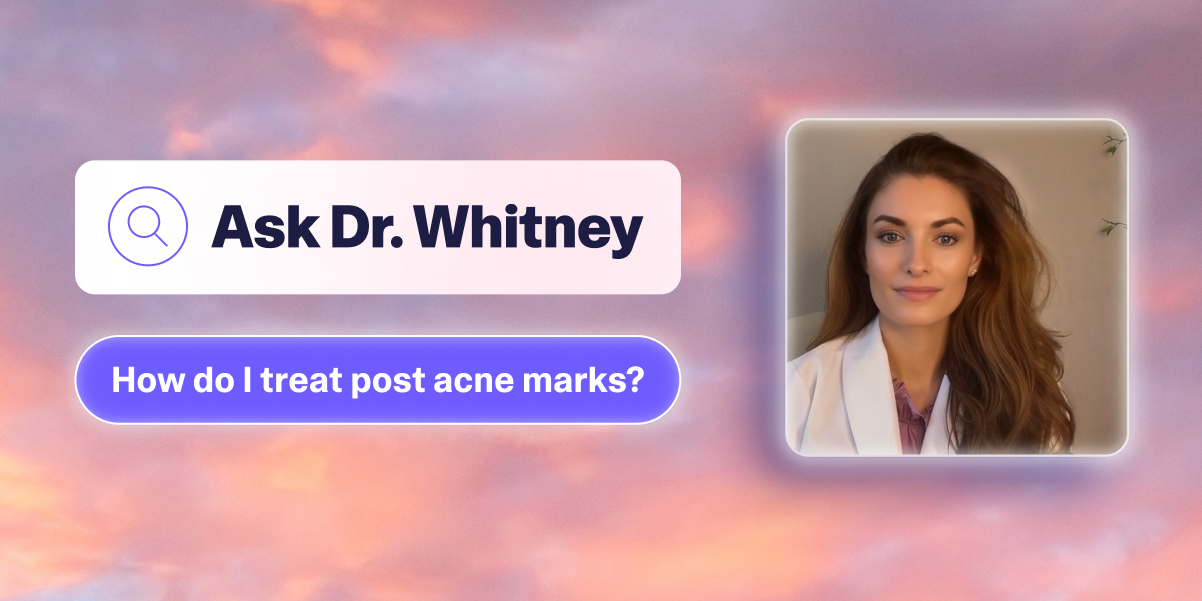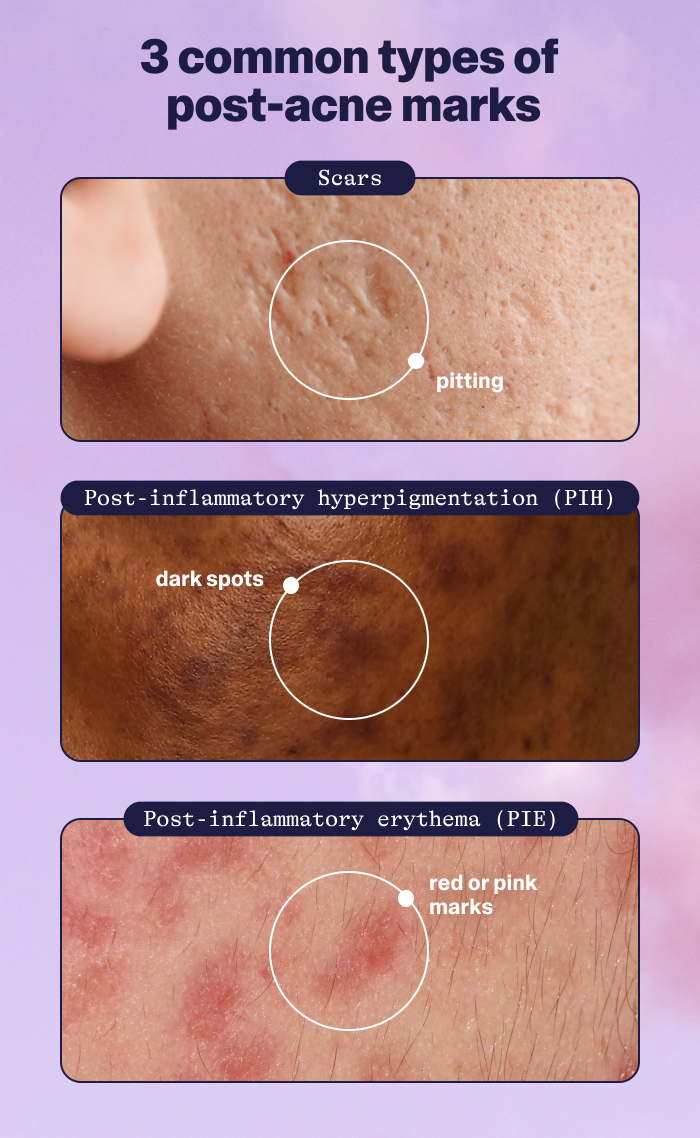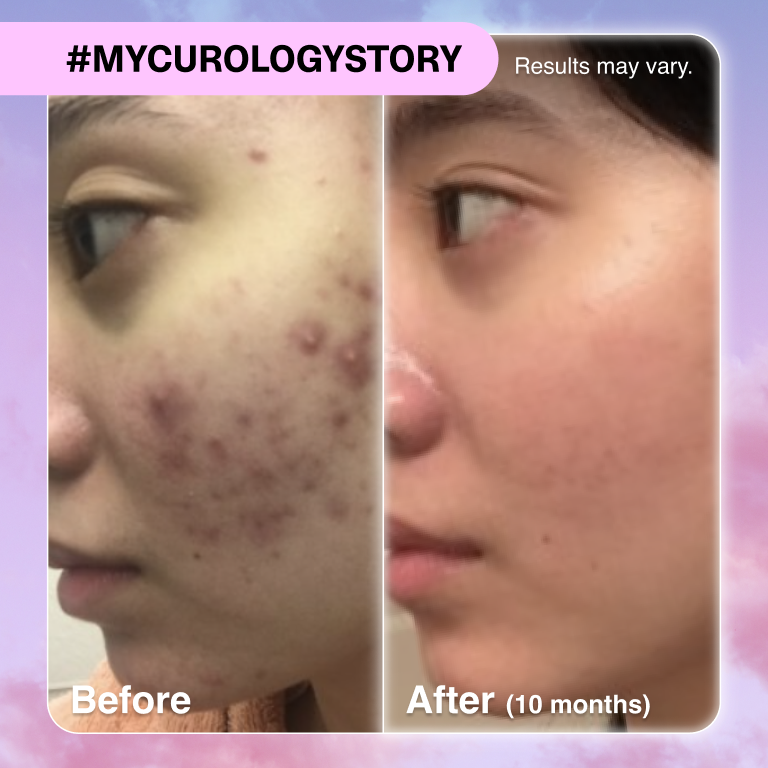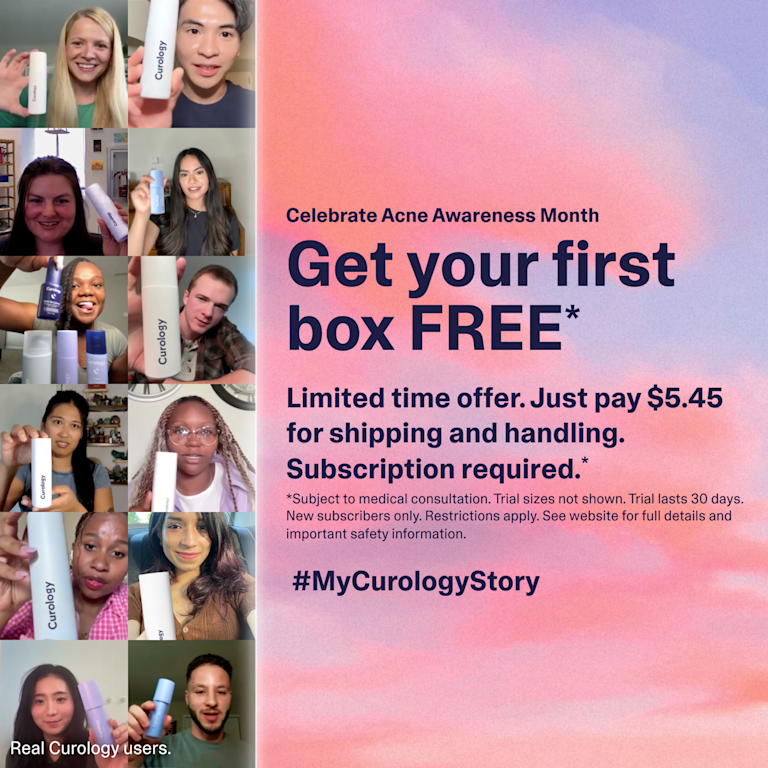How it works:
Share your skin goals and snap selfies
Your dermatology provider prescribes your formula
Apply nightly for happy, healthy skin
How it works:
How it works:
Share your skin goals and snap selfies
Your dermatology provider prescribes your formula
Apply nightly for happy, healthy skin
How it works:
Ask Dr. Whitney: What are post-acne marks and how can I treat them?
Dr. Whitney answers your most-asked questions each week for Acne Awareness Month.



Happy Acne Awareness Month! I’m Dr. Whitney Tolpinrud, MD, FAAD, a board-certified dermatologist and Medical Director at Curology.
Welcome back to our special educational series where I’m answering all of your most asked questions to help you achieve clearer skin. This week we’ll cover post-acne marks!
As a dermatologist, one of the most common concerns I hear from patients, especially after their acne has started to improve, is “What can I do about these scars?” If you think about it, acne is essentially an injury to the skin that sparks inflammation and healing, often leaving behind visible reminders in its wake.
It's completely understandable to feel frustrated when blemishes fade only to leave behind lingering marks. But here is the good news: not all post-acne marks are true scars. In fact, many of the spots people worry about most, whether red, brown, or somewhere in between, are part of the skin’s normal healing process and can improve with time and the right care. In this post, we will break down the difference between acne scars and post-acne discoloration, and walk through the best ways to treat and prevent them.

What is Post-Inflammatory Hyperpigmentation? (PIH)
Just when you think a breakout is gone for good, it leaves behind an annoying brown spot as a reminder. Post-inflammatory hyperpigmentation (PIH) occurs when inflammation from acne blemishes activates melanocytes (pigment-producing cells) to produce excess melanin (pigment that gives skin its color), leading to dark spots on the skin. These dark spots fade with time and can take up to six months (and sometimes longer) to resolve on their own.
Many patients wish they could fast-forward the fading of those stubborn brown spots. Fortunately, Curology’s personalized prescription formulas include powerful ingredients such as tranexamic acid and tretinoin to help speed up the process. Tretinoin, one of the most effective and extensively studied retinoids, not only treats acne but also significantly improves the appearance of dark spots like PIH. As a bonus, tretinoin also helps with photoaging as well!
Non-prescription options like Curology’s Dark Spot Serum can also help. This gentle, fast-absorbing serum features a unique blend of niacinamide and our Discoloration Fading Complex, which includes:
Glycolic acid
Licorice root extract
These clinically tested ingredients work together to tackle the appearance of dark spots to help visibly brighten uneven skin tone.

The sun can throw fuel on the fire for dark spots, so be sure to protect your skin daily with broad-spectrum sunscreen with at least SPF 30 or higher. Pro tip: Ensure your sunscreen is non-comedogenic (won’t clog pores). You can use this guide to check your products for potentially pore-clogging ingredients: How to Check Your Skincare Products for Pore Clogging Ingredients.
Aside from post-acne dark spots, you may notice some red or pink spots, too. Read on to learn more about this other type of post-acne mark.
What is Post-Inflammatory Erythema (PIE)?
In addition to brown spots, acne can leave behind red or pink marks on the skin called post-inflammatory erythema (PIE). PIE is the result of damage to the tiny blood vessels in the upper layers of the skin following inflammation. It typically resolves within three to six months, although certain topical treatments can help speed this up!
Topical ingredients that may help include:
Tranexamic acid
If you have a mix of PIH and PIE, these can tackle both! You can find these ingredients offered in personalized prescription formulas at Curology, or in some of our non-prescription products like Brightening Vitamin C Serum. A little reminder: don’t forget to wear your SPF every single day!
What is Depressed Scarring?
True acne scars are those permanent little indentations left behind when the skin’s healing process doesn’t go quite as planned. This happens because inflammation or acne lesions disrupt normal collagen production, leading to changes in the skin’s texture. These include:
Icepick scars
Boxcar scars
Rolling scars
Each type has its own distinct look and texture. While acne scars can be stubborn, there are plenty of treatment options that can help soften and improve their appearance. Some of the most common approaches include:
Chemical peels
Microdermabrasion
Laser treatments
Microneedling
Dermal fillers
Subcision + TCA cross technique
The effectiveness of these treatments can vary depending on the type and severity of the acne scars. It is recommended to consult with an in-person dermatologist who can assess your specific situation and recommend the most suitable treatment options.
How Can I Help Prevent Post-Acne Marks?
You’ve probably heard the saying “an ounce of prevention is worth a pound of cure.” It’s true!
It is best to help prevent acne in order to minimize the development of scars and post-acne marks (i.e., PIH and PIE) in the first place. Additionally, it’s important to avoid picking or squeezing pimples, as this can lead to scarring and inflammation. Hydrocolloid patches are a great way to resist the urge to pick and help your skin heal faster! Curology’s Emergency Spot Patch offers fast-acting support by absorbing fluid and excess oil, while protecting the skin and helping to prevent you from touching or picking at the blemishes.
Sticking to a regular and consistent skincare routine can help prevent acne and reduce post-acne marks. Think of it like going to the gym. Short, steady workouts every day work better than one long, intense session. Consistency is key!

Tretinoin, if right for you, is a great ingredient to consider using to help prevent new breakouts. Since it is generally considered the gold standard topical ingredient for both acne and anti-aging concerns, it’s a great ingredient to help treat acne, and then build on your results! As discussed, it can also help improve the appearance of post-acne marks if they occur. Prioritizing multitasking ingredients and products can streamline your routine and tackle multiple concerns at once–helping prevent new breakouts while also targeting the remnants of previous ones.
At Curology, we offer a variety of formulas with tretinoin plus two additional active ingredients to target multiple skin concerns, delivered right to your door! We have a broader range of tretinoin strengths than typically available elsewhere, which allows us to make more incremental strength increases and personalize the formula to our patients’ specific tolerances. You can work with one of our licensed dermatology providers to see if tretinoin might be right for you.
How Can Curology Help?
Breakouts can be a rollercoaster! Right when you think a pimple is gone, it feels like it either leaves behind a mark or another one pops up! Be patient, be consistent, and focus on using clinically proven ingredients from real experts. If you need expert support, you can take our skin quiz. If Curology is right for you, your licensed dermatology provider will be there to support you and answer your questions and concerns along the way.
All month long, we’re sharing some of the real skin stories of the 5.5 million Curology patients we’ve served. You can read more about each #MyCurologyStory here. My biggest hope is that this education will empower you to transform your skin, then we’ll be celebrating your #MyCurologyStory too!


Dr. Whitney Tolpinrud